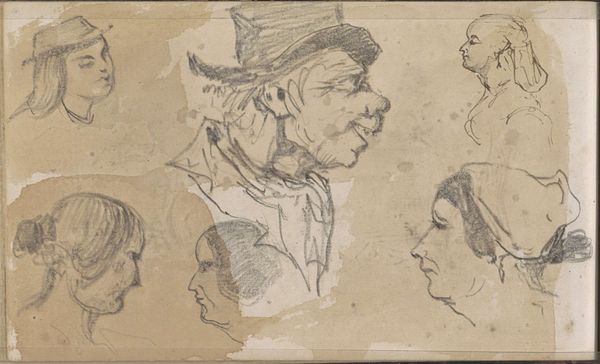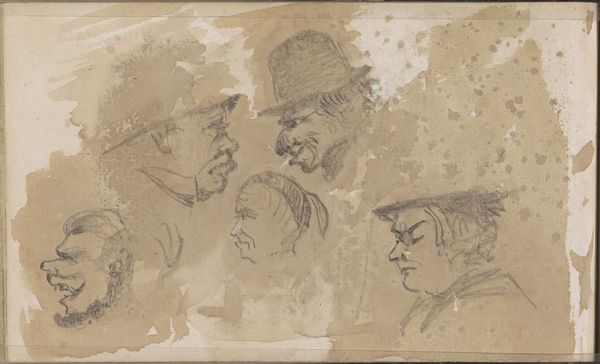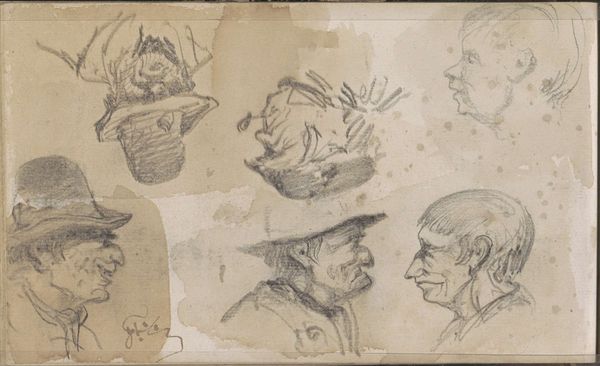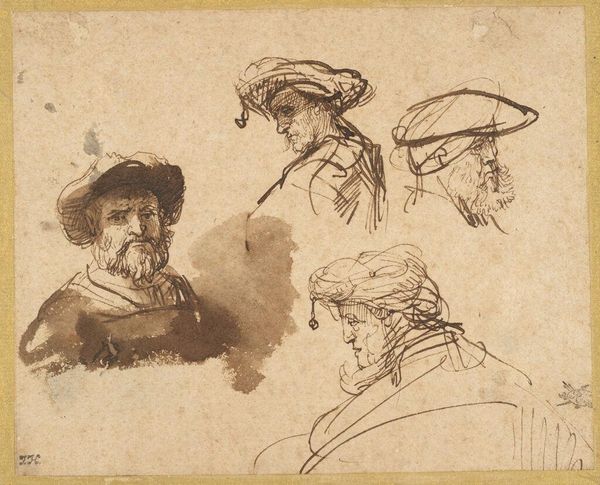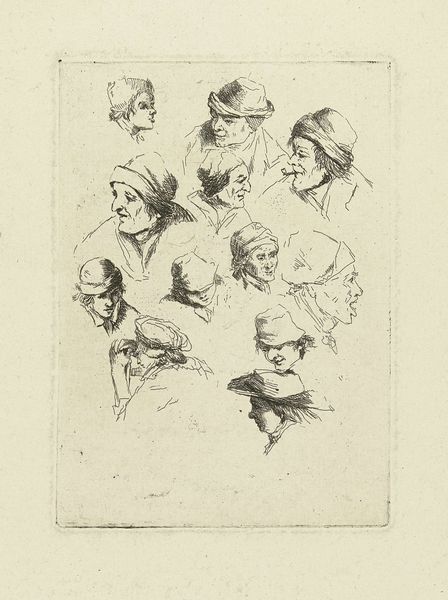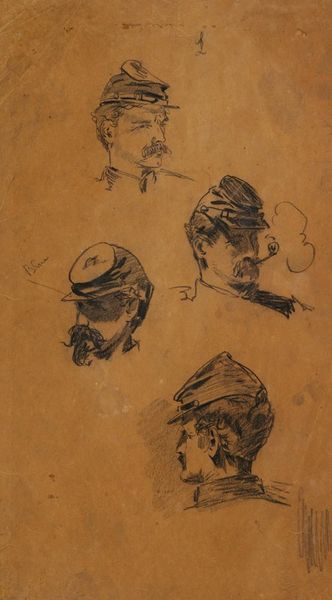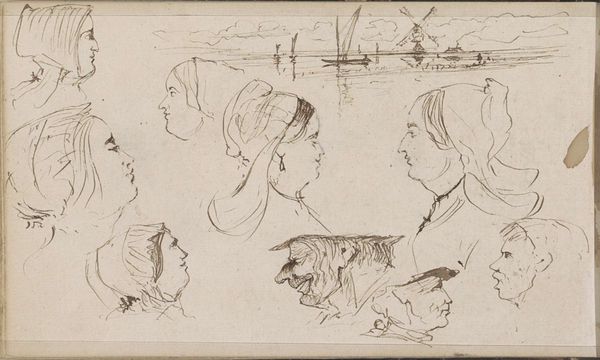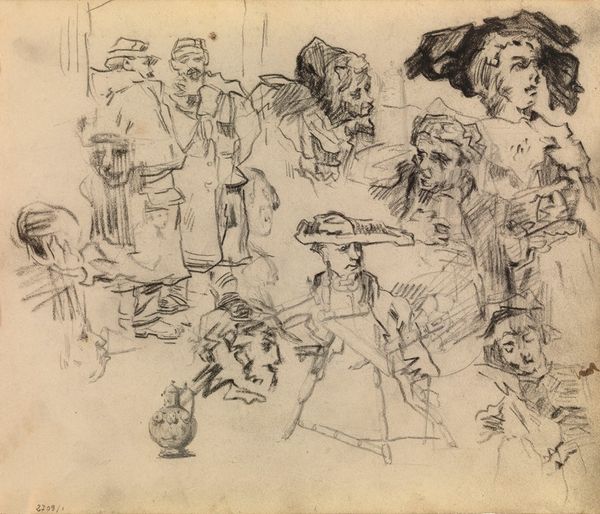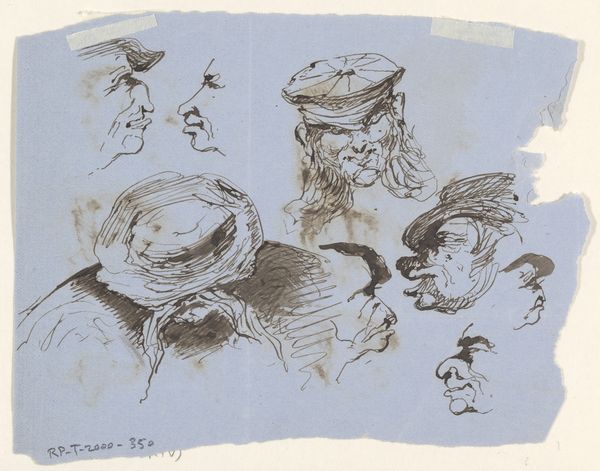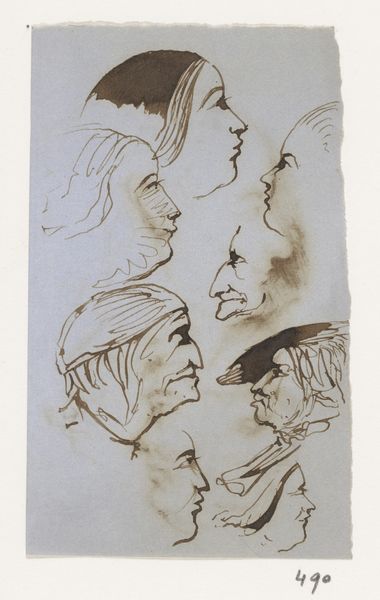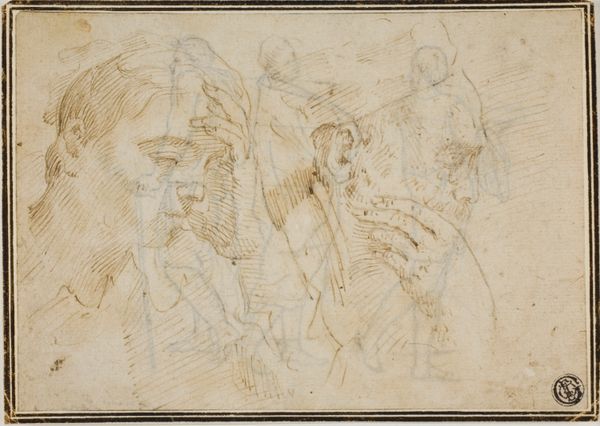
drawing, paper, pencil
#
portrait
#
drawing
#
pencil sketch
#
paper
#
pencil
#
genre-painting
#
academic-art
#
realism
Copyright: Rijks Museum: Open Domain
Curator: Here we have a fascinating pencil sketch from Johannes Tavenraat, titled "Mannen- en vrouwenkoppen," which translates to "Men's and Women's Heads." The work likely dates between 1864 and 1880 and is part of the Rijksmuseum collection. Editor: My initial reaction is a sense of…intimacy. The artist captured these figures with such quick, delicate strokes, creating a real sense of human presence despite the simplicity. They are evocative, though the paper has foxing marks, which seems rather fragile. Curator: Absolutely, I read these as studies in social stratification of the period, sketches born from careful observations in bustling marketplaces or perhaps the artist's own social circles. I notice subtle, yet definitive signifiers in the characters' headwear and general attire. We have women adorned in bonnets, in contrast to what seem to be working-class figures. It speaks volumes about status and identity, what do you think? Editor: Definitely, they represent types or archetypes. The repetition of head coverings fascinates me, in particular, how they can symbolize not only a person’s status but also hide something. The hats and bonnets perform rituals of presentation as much as the faces themselves. Think how much is conveyed through line, expression, costume...The smoking pipe also speaks about gender roles within the society of that era, a phallic symbol in the grasp of a rugged figure, hinting at power dynamics and patriarchal expectations. Curator: It's interesting how Tavenraat subtly captured nuances of class and gender dynamics within Dutch society through what appears at first glance to be a simple sketchbook study. This goes beyond simple representation to highlight the relationship between individual identity, clothing and one’s economic situation within this context, which should make us wonder, still today, if some things have truly changed. Editor: I agree completely. Through these simple sketches, the artist preserved so many narratives; we can read the emotions, aspirations, and implied stories from the era within these delicate lines. And that perhaps the faces change but many problems endure. Curator: A brief visual whisper from a time capsule. Thank you for lending me your insights, these pencil lines continue to be rather profound when dissected from this perspective. Editor: Thank you, it has been a real delight looking deeper into these sketched visages.
Comments
No comments
Be the first to comment and join the conversation on the ultimate creative platform.
